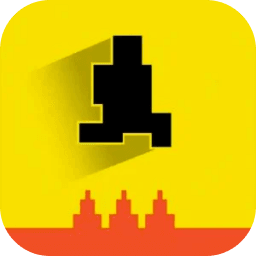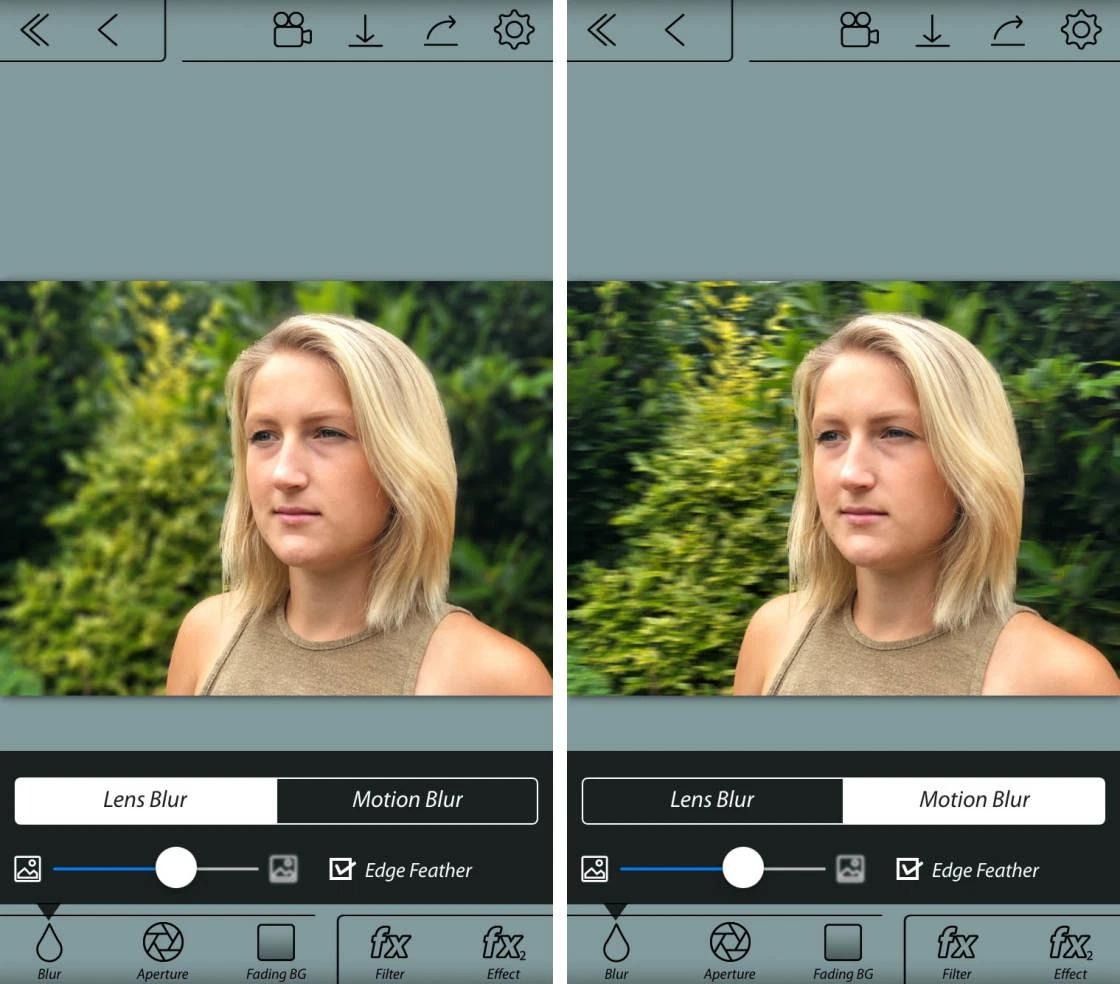

Blurring the background of a picture on your iPhone can dramatically enhance the visual appeal of your photos. Let’s learn more about this topic below with Level Devil. This technique, known as the bokeh effect, draws attention to your subject by softening the surrounding elements. Fortunately, Apple has built this functionality directly into the iPhone’s Camera app, eliminating the need for third-party applications.
Portrait Mode is the primary feature that allows iPhone users to create a beautifully blurred background effect. This mode uses advanced depth-sensing technology to separate the subject from the background, applying a selective blur to create a professional-looking image. While initially designed for portraits, this feature has evolved to work with various subjects, including pets and objects.
To use Portrait Mode, you’ll need an iPhone model that supports this feature. This includes iPhone 7 Plus and later models, with more advanced capabilities available on newer devices. The process is straightforward: open the Camera app, swipe to Portrait mode, frame your subject, and tap the shutter button. The iPhone’s software will automatically detect the subject and apply an appropriate level of background blur.
It’s worth noting that Portrait Mode works best when there’s a clear separation between the subject and the background. Optimal results are typically achieved when the subject is 2-8 feet away from the camera. This distance allows the depth sensors to accurately map the scene and apply the blur effect convincingly.
One of the most powerful aspects of the iPhone’s background blur feature is the ability to adjust the intensity of the effect. This allows you to fine-tune your images to achieve the perfect look. After taking a photo in Portrait Mode, you can modify the blur strength in the Photos app.
To adjust the blur, open your Portrait Mode photo in the Photos app and tap “Edit.” You’ll see a slider labeled “Depth” or “f,” depending on your iPhone model. Sliding this control left or right will decrease or increase the blur effect, respectively. This level of control gives you the flexibility to create subtle or dramatic effects, depending on your artistic vision.
It’s important to experiment with different blur intensities to find what works best for each image. Sometimes, a subtle blur can add depth without overpowering the subject, while other times, a more pronounced effect can create a striking visual impact. The key is to find a balance that enhances your subject without making the image look artificial.
Beyond simple background blur, newer iPhone models offer additional tools to enhance your portraits. These include various lighting effects and depth control options that can further separate your subject from the background. By combining these features with the background blur, you can create truly stunning images that rival those taken with professional cameras.
The lighting effects in Portrait Mode allow you to simulate different lighting conditions, such as studio lighting or stage lighting. These can be applied and adjusted after taking the photo, giving you even more creative control over your images. Experiment with different lighting styles to see how they interact with the background blur for unique and captivating results.
While Portrait Mode is ideal for creating blur effects when taking new photos, what about existing images in your camera roll? Fortunately, Apple has thought of this too. With iOS 15 and later, you can apply a portrait effect to photos of people taken outside of Portrait Mode, as long as the iPhone can detect a person in the image.
To add a blur effect to an existing photo, open the image in the Photos app and tap “Edit.” If the option is available, you’ll see a cube icon near the top of the screen. Tap this icon to apply the portrait effect. You can then adjust the blur intensity using the depth control slider, just as you would with a photo taken in Portrait Mode.
This feature is particularly useful for older photos or images taken with devices that don’t support Portrait Mode. It allows you to retroactively enhance your photos and create a more focused, professional look. However, it’s important to note that the results may not be as precise as those achieved when using Portrait Mode during the initial capture.
While the iPhone’s built-in background blur features are impressive, they do have some limitations. For instance, Portrait Mode may struggle with complex scenes or subjects with intricate edges. In these cases, the blur effect might not be applied accurately, leading to artifacts or areas where the blur doesn’t look natural.
To overcome these limitations, you can try a few workarounds. First, ensure your subject is well-lit and clearly separated from the background. If possible, move to a location with a simpler background. You can also try adjusting your position or the angle of the shot to create more depth between the subject and background.
In some cases, you might need to resort to third-party apps for more precise control over background blur. While this article focuses on built-in iPhone features, it’s worth mentioning that numerous apps in the App Store offer advanced blur and masking tools. These can be useful for fine-tuning problematic areas or applying blur to subjects that the iPhone’s Portrait Mode doesn’t recognize.
Background blur isn’t just for traditional portraits. As you become more comfortable with the feature, you can start exploring creative applications to enhance various types of photography. For instance, you can use background blur to highlight small objects in macro photography, creating striking images of flowers, insects, or intricate details.
In street photography, selective blur can help isolate a subject from a busy urban environment, drawing the viewer’s attention to a specific element of the scene. For food photography, a blurred background can create a sense of depth and atmosphere, making the dish the star of the image.
Don’t be afraid to experiment with unconventional subjects. Try using Portrait Mode on inanimate objects with interesting textures or shapes. The blur effect can transform ordinary items into artistic compositions, playing with depth and focus in unexpected ways.
To take your photography to the next level, consider combining background blur with other powerful features of the iPhone camera. For example, use the HDR (High Dynamic Range) mode in conjunction with Portrait Mode to capture scenes with challenging lighting conditions. This combination allows you to maintain detail in both highlights and shadows while still achieving a beautiful background blur.
Another interesting technique is to use the iPhone’s Night mode alongside Portrait Mode for low-light portraits. While this combination isn’t always available, newer iPhone models are increasingly capable of applying portrait effects in dimmer conditions. The result can be striking night portraits with a soft, dreamy background blur.
For action shots, try using the burst mode to capture a series of images, then apply background blur to the best frame. This technique can be particularly effective for sports or wildlife photography, where you want to freeze a moment of action while still creating a sense of depth in the image.
As with any photographic technique, mastering background blur on your iPhone takes practice and experimentation. Don’t be discouraged if your first attempts don’t yield perfect results. Keep exploring different subjects, lighting conditions, and compositions to develop your skills and artistic eye.
Remember that background blur is a tool to enhance your photos, not a magic solution for every image. Sometimes, a sharp background can be just as effective in telling a story or capturing a moment. The key is to use blur purposefully, considering how it contributes to the overall composition and mood of your image.
Pay attention to the way professional photographers use depth of field in their work. Study portraits, product shots, and landscape images that effectively use background blur. Try to understand why certain images are compelling and how you might apply similar techniques in your own photography.
Once you’ve created stunning images with beautifully blurred backgrounds, it’s time to share them with the world. Social media platforms like Instagram and Facebook are excellent venues for showcasing your photography skills. When posting, consider adding a brief description of your technique or the story behind the image to engage your audience.
For a more curated presentation of your work, consider creating a digital portfolio or photo blog. This can be a great way to track your progress over time and share your best work with potential clients or fellow photography enthusiasts.